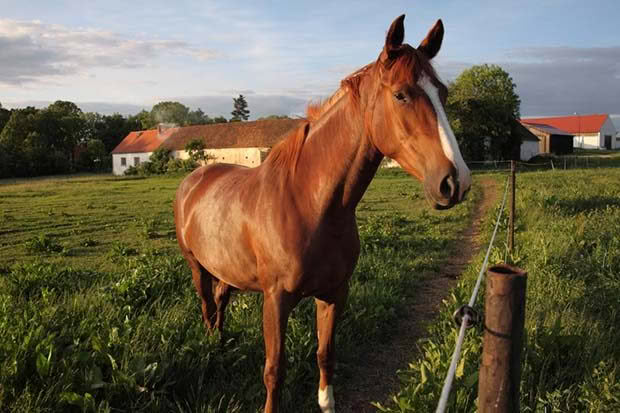4 things you must consider before buying a lifestyle block

Photo: Dreamstime
Green grass, blue skies, peace and quiet, cows, sheep, chickens, a pony, an elegant garden or a food forest full of heritage fruit trees. But there’s important questions to ask yourself before you commit to moving to a block.
By Nadene Hall
Where you start looking may be predetermined by where you work. If so, the issues will be:
• the time and length of the commute
• whether the area suits your goal, eg growing conditions, support services.
1. THE COMMUTE
A long commuting time can be one of the biggest stresses for the lifestyle block owner. If you have teenagers they may be able to use local bus services to get to the nearest college, but you’ll be the taxi for extra-curricular activities. Add up all your travel over a year and the petrol and time can be a significant cost.
If working from home is part of your plan then check the status of broadband connections in the area you’re considering.
The Rural Broadband Initiative is a joint venture between Chorus and Vodafone to bring broadband to all rural areas of NZ – check here to see if an address has coverage: www.vodafone.co.nz/network/rural/
But a specific block will need specific checks as broadband coverage can be a bit like cellphone coverage: patchy just where you really need it.
Another option is to find a local broadband provider. These often aren’t the big broadband companies, but regional companies offering specific products for local communities.
2. SIZE
In surveys of NZ Lifestyle Block magazine readers, the average block size is the traditional 10 acres (4ha), but sizes ranged from half an acre (0.2ha or 2000m²) right up to 1000 acres (404ha).
About a third were planning to move to a larger block, and anecdotally it seems buying a block that quickly ends up being too small for your needs is a common issue.
It’s always better to have slightly too much land than too little. You can always lease spare land for grazing or cropping, use it for silage and hay production, or let your neighbour graze their animals on it.
Too little land is eternally frustrating, especially if you branch out into owning livestock, something a lot of people don’t realise is so enjoyable until they start living rurally.
If you want livestock, how big a block do you need? The number will depend on the land’s carrying capacity.
A hectare of fertile soil in a temperate climate with good rainfall can carry a lot more than one with clay soil and half the rainfall. The way it’s managed also makes a big difference in the production and nutritional value of pasture.
3. THE AREA AND ITS BUSINESS POSSIBILITIES
Some specific dreams have limited locations: if it’s to grow hops for beer making, the best place to do it is the Nelson region. If it’s to be big in kiwifruit, the Bay of Plenty is king.
Factors that can help pinpoint the right block for you are its potential uses, the distance to market, and climate. If an area is known for a particular crop it’s going to have important key assets such as pack houses, distribution centres, transport, auction houses, the support people required for maintenance, and specialist equipment suppliers.
Another option is to look at it the other way round: choose an area that suits your work and lifestyle, then find opportunities that suit the block.

One acre should be able to support one to two horses. Photo: Skutvik | Dreamstime.com –
4. HOW MANY STOCK CAN IT CARRY?
This is a very basic rule of thumb and it will vary, but generally one acre (0.4ha or 4000m²) in an area with good rainfall and reasonably healthy, well-maintained soil and pasture should support:
• one cow for one year, raising a calf until about three months of age
OR
• six sheep or goats raising lambs or kids until about three months of age
OR
• 1-2 horses, if hard feed and hay is provided over winter.
NADENE’S TOP TIP
Don’t think being near a big city gives you good broadband coverage. I live just 45 minutes drive from Auckland City (off-peak) but until late last year there were only three options for broadband, two of them eye-wateringly expensive and with very slow speeds. It’s worth checking out whether there are wireless networks covering your region offering cheaper high speed broadband options.
 This article first appeared in NZ Lifestyle Block Magazine.
This article first appeared in NZ Lifestyle Block Magazine.
